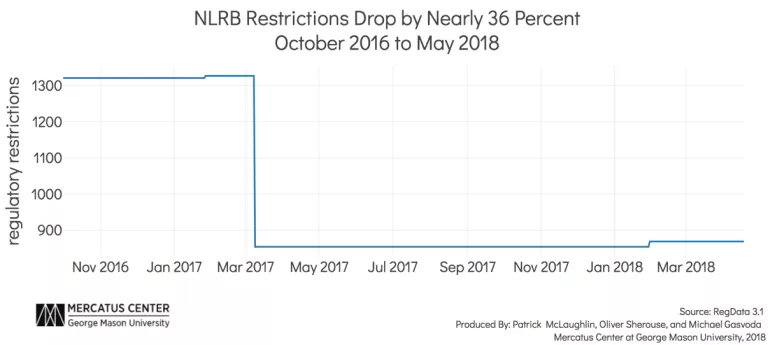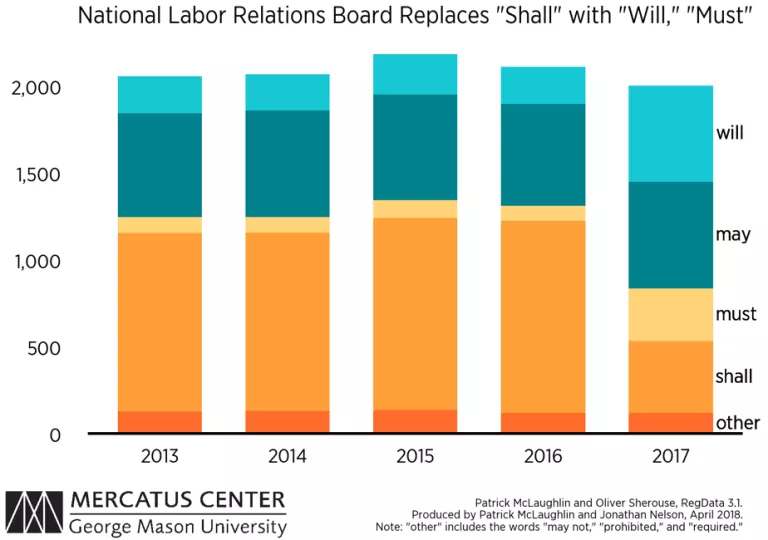- | Regulation Regulation
- | Expert Commentary Expert Commentary
- |
NLRB Change Shows Agencies Can Simplify Regulations
Below, the RegData US Regulation Tracker shows the number of regulatory restrictions produced by the National Labor Relations Board (NLRB) on the books between October 2016 and March 2018. Between March 8 and March 10, 2017, we can see a sharp decline in the number of restrictions, which fell from 1,327 to 854, a decrease of nearly 36 percent.

What happened in March?
On February 24, 2017, the NLRB published an amendment to its Procedural Rules and Regulations, which included a provision to replace the term “shall” with “must,” “will,” or “may” where appropriate. This change resulted in a significant number of instances where the word “will” replaced “shall” in the NLRB’s regulatory text, likely as part of the Board’s implementation of the Plain Writing Act of 2010. The replacements occurred primarily where the text referred to action taken by an employee or member of the Board, rather than imposing requirements on a regulated party.
The chart below shows the dramatic transformation in the composition of words in the NLRB’s regulatory text (found in 29 CFR 100-103). The use of the words “must” and “will” greatly increased, while the use of “shall” declined by over 60 percent. Since for the purpose of the RegData US Regulation Tracker, regulatory restrictions are defined as words like “shall” and “must,” this change in language led to the significant decline in restrictions seen above.

Clear regulatory language is important because it allows regulated parties to understand what regulators expect from them without spending significant amounts of time and money on legal fees. This episode at the NLRB demonstrates that regulatory agencies, even the independent ones, are able to take steps to meaningfully simplify their regulations.
The RegData US Regulation Tracker can help both regulated parties and the agencies themselves track how the agencies are improving and streamlining their regulations. The tracker runs on the QuantGov platform, which quantifies regulation by counting the number of regulatory restrictions in the Code of Federal Regulations (the words shall, must, may not, prohibited, and required). The tracker can display other attributes of regulations that the QuantGov platform identifies or quantifies, like levels of regulation targeting specific industries or the quantities produced by regulatory agencies over time. Furthermore, the tracker can display multiple industry or agency regulatory restriction counts at the same time.

